In today’s competitive market, efficiency and precision are crucial for packaging and bottling companies. Bottle filling machines offer a technological leap forward, enabling higher throughput, reduced labor costs, and improved product consistency. However, the variety of options available, ranging from simple manual fillers to sophisticated automated systems, can be overwhelming. Investing in a bottle filling machine is a significant decision for any packaging or manufacturing company. The right bottle filling machine can streamline production, boost efficiency, and ultimately impact your bottom line. However, navigating the vast landscape of bottle filling technology can be daunting. To ensure you make an informed and profitable choice, asking the right questions is paramount.
1. What Type of Product Are You Filling? (Viscosity, Properties, and Compatibility)
This is the fundamental question. The nature of your product – its viscosity, density, chemical properties, and temperature – will significantly influence the type of filling machine best suited for the task.
● Viscosity: Thin liquids like water or alcohol require different filling mechanisms than viscous substances like honey or gels. Gravity fillers, volumetric fillers, and pump fillers are common choices, but their effectiveness varies depending on the viscosity of the product. For highly viscous products, positive displacement pumps might be necessary.
● Chemical Properties: Certain products, particularly corrosive or acidic substances, require machines constructed from specific materials like stainless steel or specialized plastics that can withstand degradation. Ignoring material compatibility can lead to equipment failure and product contamination.
● Temperature: Hot-fill applications demand equipment that can handle elevated temperatures without compromising the integrity of the machine or the product. Similarly, cryogenic filling requires specialized systems to maintain extremely low temperatures.
● Particulates: Does your product contain solid particles, such as fruit pulp, seeds, or spices? If so, you’ll need a filler designed to handle these particulates without clogging or damaging the machine. Piston fillers or gravity fillers with wide nozzle openings are often preferred.
Failing to consider these properties can result in inaccurate fills, product degradation, and even equipment damage. For example, attempting to fill a highly viscous product with a gravity filler designed for water would lead to slow, inconsistent filling and potential product spillage. Understanding the specific characteristics of your product is the cornerstone of selecting the right filling machine.
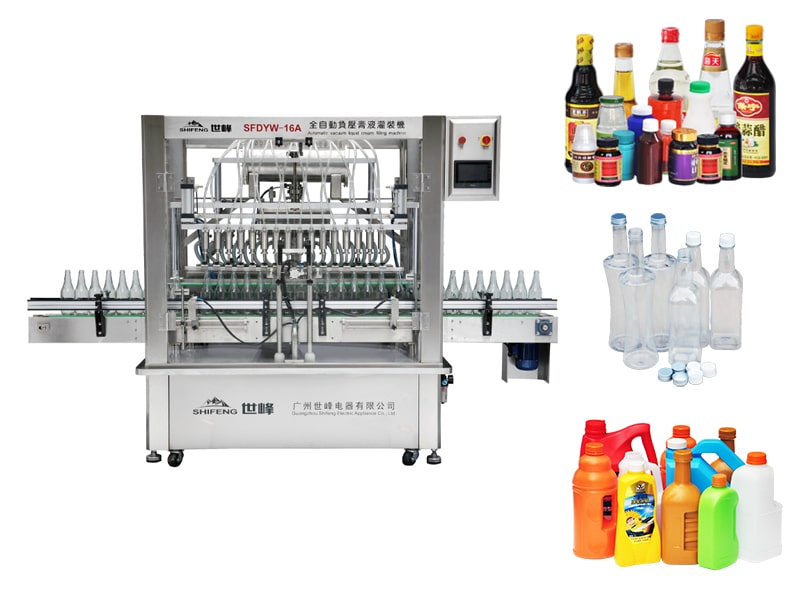
2. What Type of Container Are You Filling? (Material, Shape, and Size)
The container’s material, shape, and size are critical factors in determining the appropriate filling machine.
● Material: Glass, plastic (PET, HDPE), metal, and even flexible pouches each present unique challenges. Glass requires careful handling to prevent breakage, while certain plastics may react with specific products. Metal cans might necessitate specific sealing and seaming processes.
● Shape: Irregularly shaped bottles (e.g., custom designs, ergonomic grips) can complicate the filling process. Straight-sided, cylindrical bottles are generally easier to handle than those with complex curves or angles.
● Size: The volume of the container dictates the filling capacity required of the machine. Small vials require precise filling accuracy, while large containers demand higher filling rates. Adjustable filling heads are beneficial for handling a range of container sizes.
Consider the container’s wall thickness, neck diameter, and overall stability. A fragile container might require gentler handling mechanisms to prevent damage. The compatibility between the container material and the product being filled is also paramount. For instance, certain essential oils can leach chemicals from specific plastics, compromising product quality and safety.
3. What is Your Desired Production Rate (Bottles Per Minute)?
Your desired production rate, measured in bottles per minute (BPM), is a key driver of the filling machine’s speed and automation level.
● Manual Fillers: Suitable for low-volume production, often used for small businesses or niche products. They require significant manual labor and are not suitable for high-throughput applications.
● Semi-Automatic Fillers: Offer a balance between automation and manual operation. They require some operator intervention but can significantly increase production compared to manual fillers.
● Automatic Fillers: Designed for high-volume production, these machines automate the entire filling process, minimizing labor costs and maximizing efficiency. They typically incorporate sophisticated sensors, controls, and material handling systems.
Accurately assess your current and projected production needs. Overestimating your requirements can lead to unnecessary investment in an oversized machine, while underestimating can create bottlenecks and limit your growth potential. Consider the scalability of the machine – can it be easily upgraded to accommodate future increases in production volume?
4. What Level of Automation Do You Need?
The level of automation required depends on your budget, production volume, labor costs, and desired efficiency.
● Manual: Operator-controlled filling, suitable for small batches and niche products.
● Semi-Automatic: Requires operator involvement for tasks like bottle placement and removal, but the filling process itself is automated.
● Automatic: Fully automated process from bottle infeed to discharge, minimizing labor costs and maximizing efficiency.
Automation can significantly reduce labor costs and improve consistency, but it also requires a higher initial investment. Weigh the pros and cons carefully, considering your long-term business goals and the availability of skilled personnel to operate and maintain the machine.
5. What Filling Principle is Most Suitable? (Gravity, Volumetric, Pump, etc.)
Different filling principles are suited for different products and applications.
● Gravity Fillers: Utilize gravity to fill containers, ideal for thin, free-flowing liquids like water, juice, and alcohol. They are relatively simple and cost-effective.
● Volumetric Fillers: Dispense a precise volume of product into each container, suitable for a wide range of liquids, including viscous substances. They offer excellent accuracy and consistency.
● Pump Fillers: Use pumps to force product into containers, ideal for highly viscous liquids, gels, and creams. They offer high accuracy and versatility.
● Piston Fillers: Utilize pistons to draw product into a cylinder and then dispense it into the container, suitable for thick and particulate-laden products.
● Net Weight Fillers: Fill containers based on weight, ideal for products where volume is not a reliable indicator of quantity.
The choice of filling principle depends on the product’s properties, the desired accuracy, and the production rate.
6. What is Your Budget? (Initial Investment, Operating Costs, Maintenance)
Your budget is a critical constraint in the selection process. Consider not only the initial purchase price but also the ongoing operating costs and maintenance expenses.
● Initial Investment: Includes the cost of the machine itself, installation, and training.
● Operating Costs: Encompass energy consumption, labor costs, and consumable materials.
● Maintenance: Includes routine maintenance, repairs, and spare parts.
A cheaper machine might seem appealing initially, but it could lead to higher operating costs and more frequent breakdowns in the long run. Invest in a reliable, well-maintained machine that offers a good return on investment over its lifespan. Consider financing options and explore potential government grants or incentives for investing in energy-efficient equipment.
7. What Sanitary Requirements Must Be Met? (CIP, SIP)
For industries like food, beverage, and pharmaceuticals, sanitary requirements are paramount.
● CIP (Clean-in-Place): Allows for automated cleaning of the machine without disassembly, minimizing downtime and labor costs.
● SIP (Sterilize-in-Place): Enables sterilization of the machine without disassembly, ensuring product safety and compliance with regulatory standards.
Machines designed for sanitary applications typically feature smooth surfaces, minimal crevices, and materials that are resistant to corrosion and bacterial growth. Ensure the machine meets all relevant industry standards and regulations, such as those set by the FDA or USDA.
8. What After-Sales Service and Support is Available?
Reliable after-sales service and support are crucial for minimizing downtime and ensuring the long-term performance of your machine.
● Spare Parts Availability: Can you readily obtain spare parts when needed?
● Technical Support: Is technical support readily available via phone, email, or on-site visits?
● Maintenance Contracts: Are maintenance contracts available to provide regular servicing and prevent breakdowns?
● Training: Does the supplier offer training for your operators and maintenance personnel?
Choose a supplier with a proven track record of providing excellent after-sales service and support. Ask for references and speak to other customers to gauge their experience.
9. What is the Footprint and Layout of the Bottle Filling Machine?
The machine’s footprint and layout must be compatible with your existing facility.
● Floor Space: Do you have sufficient floor space to accommodate the machine?
● Layout: Can the machine be easily integrated into your existing production line?
● Accessibility: Can operators and maintenance personnel easily access the machine for operation and maintenance?
Carefully measure your available floor space and consider the machine’s footprint, including any necessary clearances for operation and maintenance. Ensure the machine’s layout is compatible with your existing production line and material handling systems.
10. Is the Bottle Filling Machine Compliant with Relevant Safety Standards?
Safety is paramount. Ensure the machine complies with all relevant safety standards and regulations.
● Guards and Interlocks: Are all moving parts properly guarded to prevent accidents?
● Emergency Stop Buttons: Are emergency stop buttons readily accessible?
● Electrical Safety: Does the machine meet all relevant electrical safety standards?
Choose a machine with robust safety features and ensure your operators receive proper training on safe operating procedures. Regular safety audits and maintenance are crucial for preventing accidents and ensuring a safe working environment.
Conclusion: Making the Right Choice for Your Bottling Needs
Investing in a bottle filling machine is a strategic decision that can significantly impact your business’s efficiency and profitability. By carefully considering these 10 key questions, you can make an informed choice that aligns with your specific needs and budget. Remember to prioritize product compatibility, container specifications, production requirements, and after-sales support. Don’t hesitate to consult with experts and seek out reputable suppliers like SFXB (https://www.xuebapack.com/) to ensure you select the right bottle filling machine for your long-term success. Thorough research and diligent evaluation are the keys to a successful and profitable investment.
| References: | |
| 1. | https://www.fda.gov/ Retrieved from: FDA Guidelines on Aseptic Filling |
| 2. | Sustainable Packaging Coalition (SPC) Retrieved from:2024 Packaging Innovations Trends Report |
| 3. | International Society of Automation (ISA) Retrieved from:5 Important Ways Packaging Automation Powers Up Your Business |


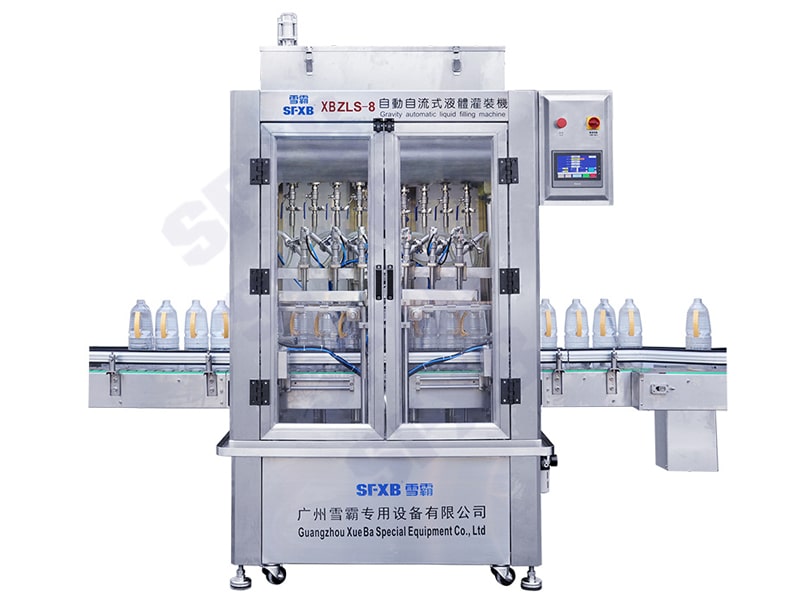
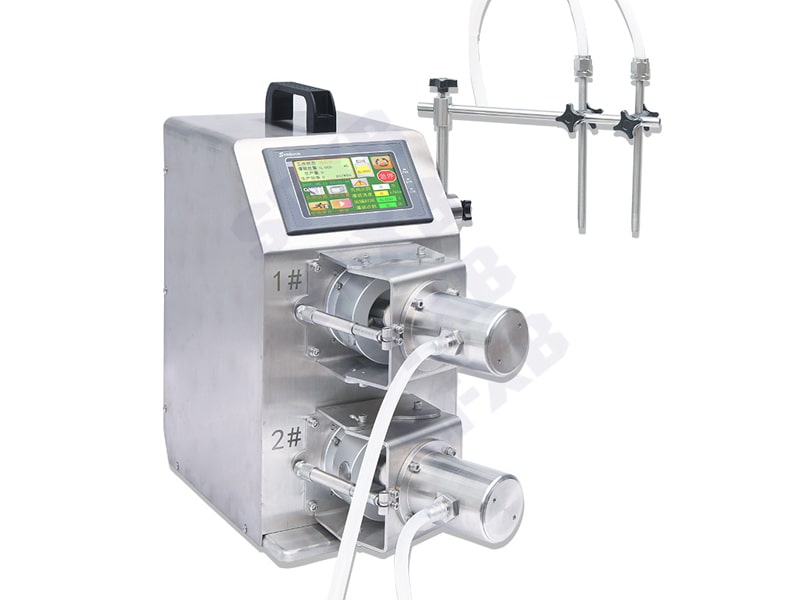
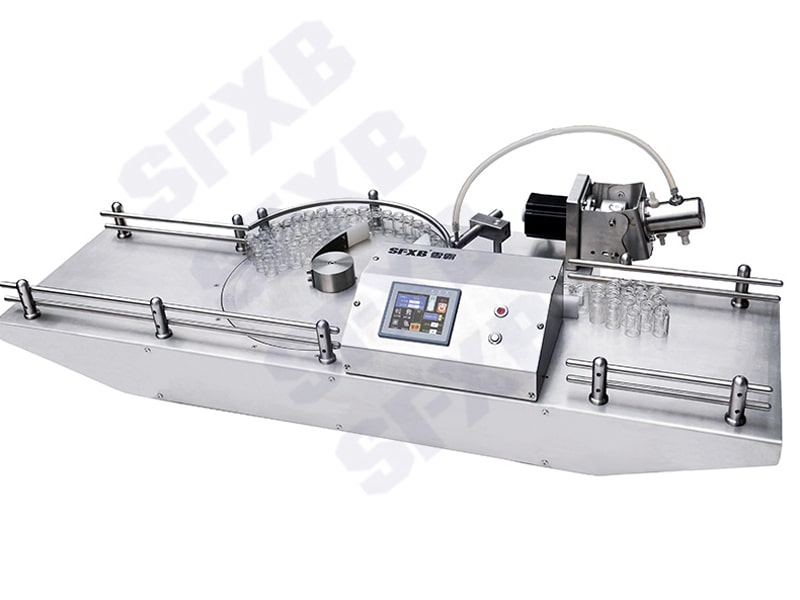
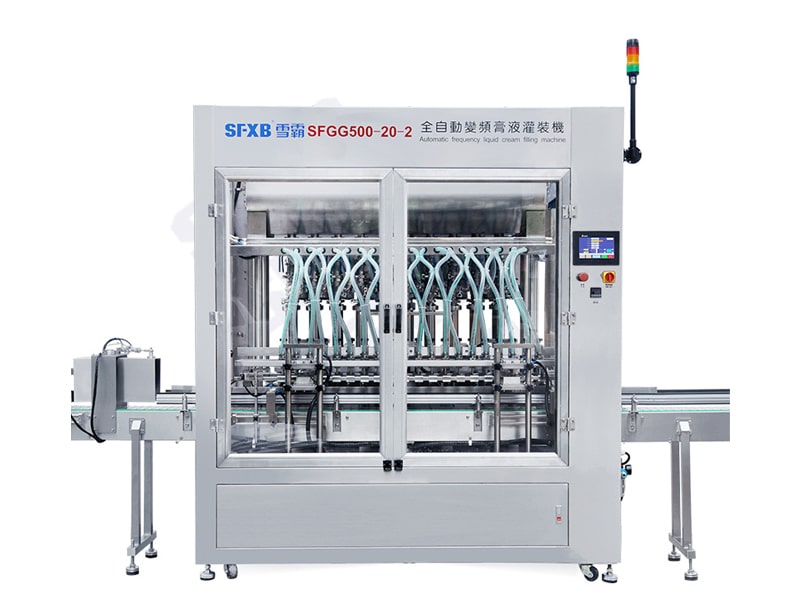
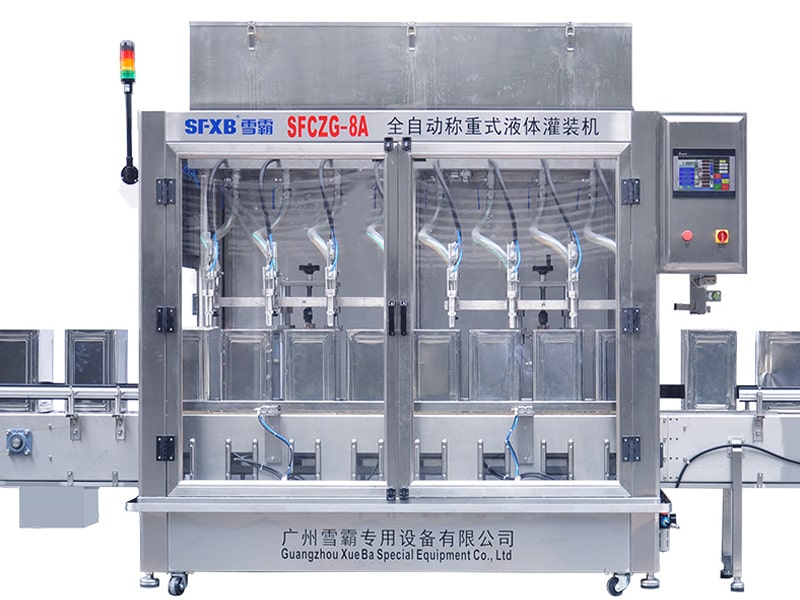




Comments